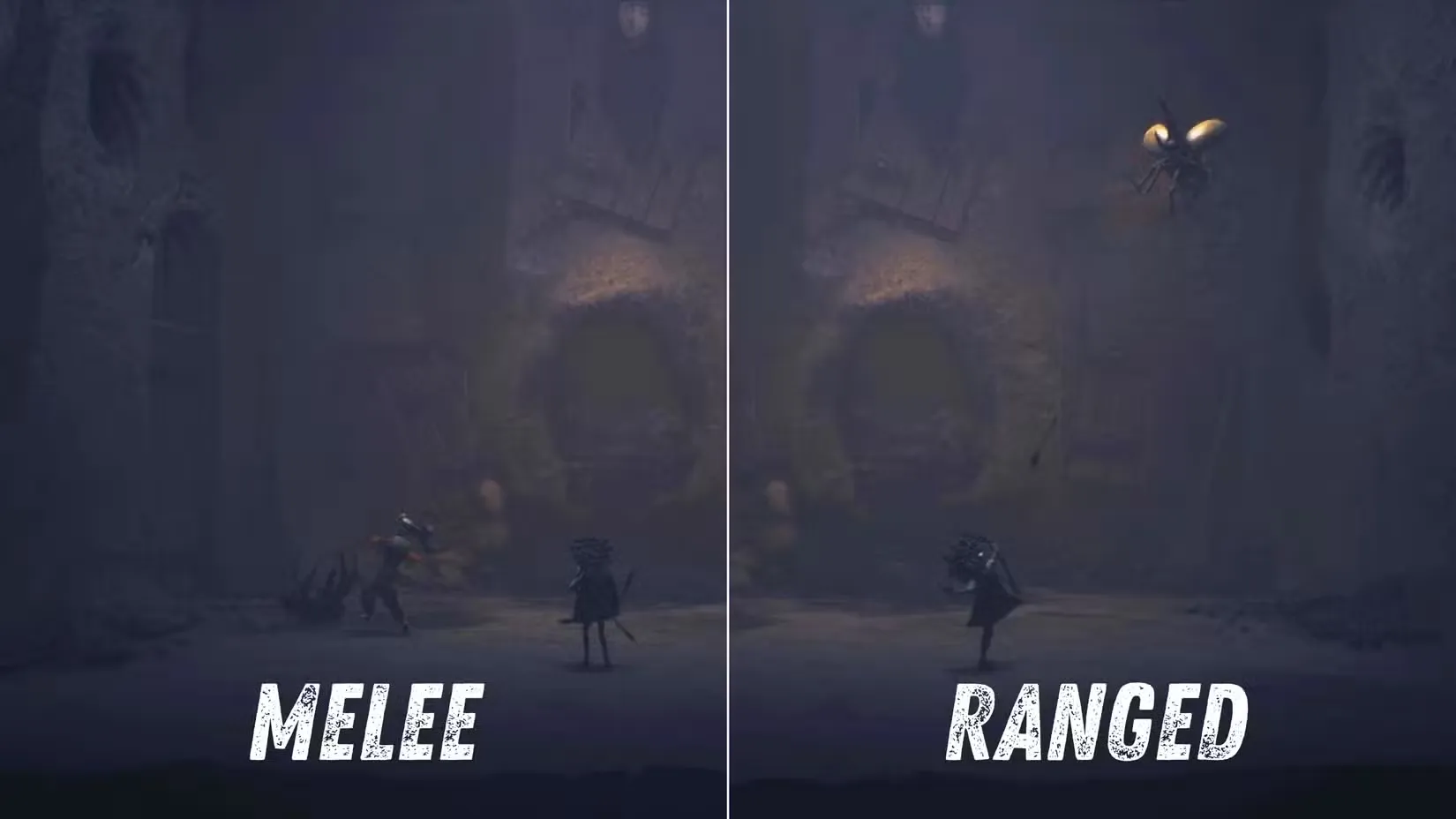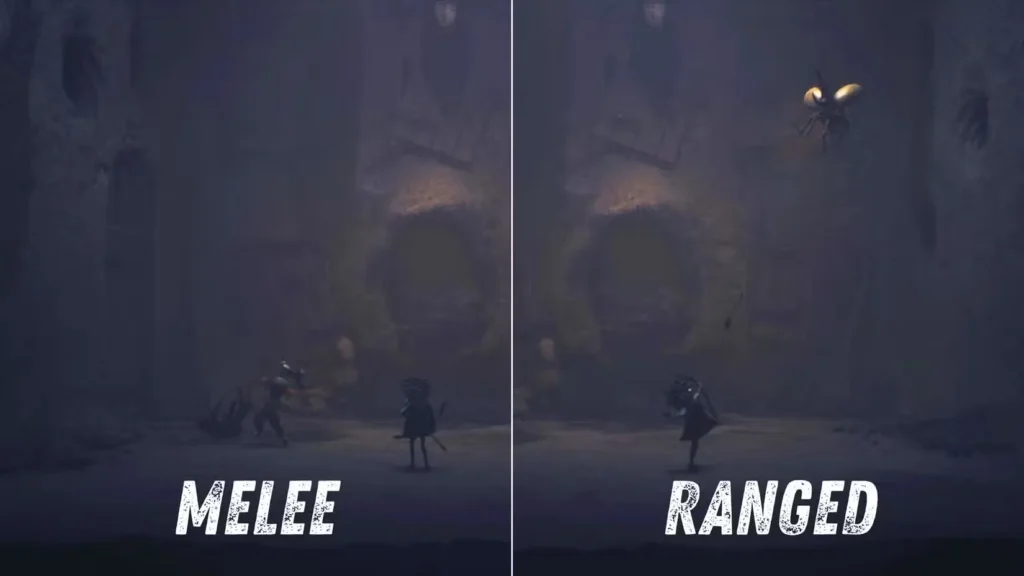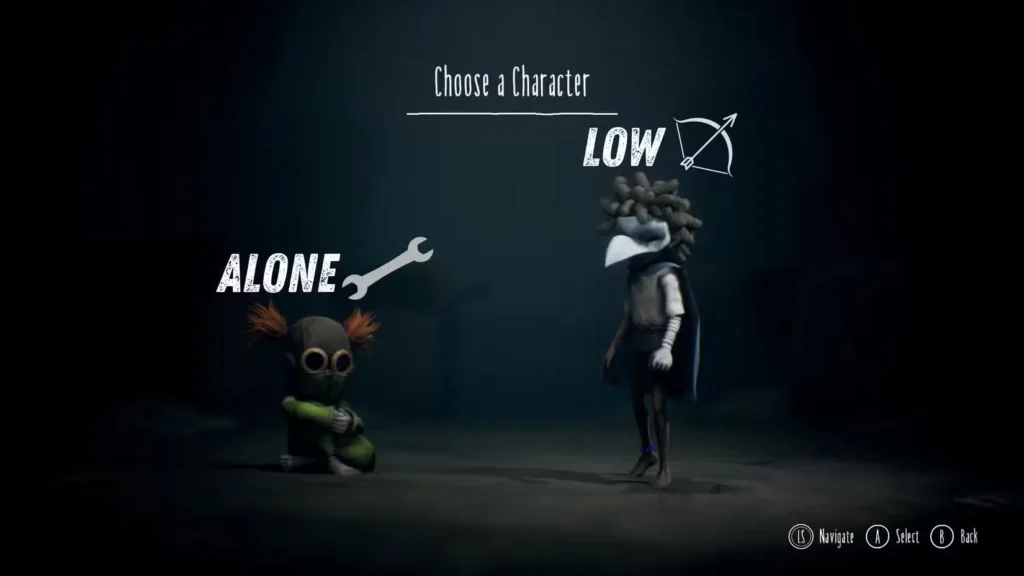
Newsletter Subscribe
Enter your email address below and subscribe to our newsletter

Enter your email address below and subscribe to our newsletter
Your Source for Game News and Guides

One of the biggest changes Little Nightmares 3 brings to the series is the choice between two distinct protagonists: Low and Alone. Unlike Six’s solo journey in previous games, you’re now picking a partner for your trip through The Nowhere—and that choice affects how you’ll actually play the game.
Here’s the thing that caught me off-guard: this decision is permanent for your entire playthrough. No swapping mid-game, no testing both in the first chapter. You commit at the character select screen and that’s your companion (or character, if playing solo) until the credits roll.
So let’s break down everything you need to know about both characters to make the right choice for your playstyle.
First, let’s clear up the confusion because the game doesn’t actually label these characters by name on the selection screen. You’re choosing based on appearance alone (pun intended), which leaves many players wondering who’s who.


Visual Identity:
Signature Weapon: Wrench (melee tool)
Gameplay Role: Alone is your hands-on problem solver. While Low handles threats from a distance, Alone gets up close and personal with both puzzles and enemies.

Visual Identity:
Signature Weapon: Bow and Arrow (ranged weapon)
Gameplay Role: Low takes a more tactical approach, engaging enemies and environmental puzzles from range with surprising precision.
The distinction between these two goes way beyond aesthetics. Each character fundamentally changes how you interact with Little Nightmares 3’s world.
What makes the character choice interesting is that neither protagonist can handle combat entirely alone. The game builds cooperation into its core design:
Low’s Combat Role:
Alone’s Combat Role:
Why this matters: If you’re playing solo, your AI companion handles the other role. But in co-op? You’re constantly coordinating these attack patterns, calling out enemy positions, and timing your strikes together.
The cooperative design extends beyond combat into every environmental interaction:
Low’s Environmental Abilities:
Alone’s Environmental Abilities:
Design philosophy: Little Nightmares 3 constantly alternates which character “leads” in different sections. One puzzle might require Low to shoot three distant targets while Alone navigates platforms. The next might have Alone cranking gears while Low covers them from enemies.
AspectLow (Crow Mask)Alone (Goggles)WeaponBow & ArrowWrenchCombat StyleRanged initiatorMelee finisherRangeLong-distance attacksClose-quarters onlyPuzzle ToolsShoots ropes, buttons, distant switchesTurns gears and mechanical systemsPlaystyleTactical, cautious, supportiveAggressive, hands-on, directCutscene FocusSlightly more prominentEqually important but less centeredSolo DifficultyEasier (AI handles melee well)Harder (AI ranged support less intuitive)
Alright, let’s get practical. After playing through as both characters, here’s my honest recommendation:

If you’re tackling Little Nightmares 3 alone with the AI companion, Low is the better choice for your first playthrough. Here’s why:
Reasons Low works better solo:
When to pick Alone in solo:
In multiplayer, the choice becomes genuinely preference-based:
Choose Low if you:
Choose Alone if you:
Pro co-op tip: Discuss with your partner before selecting. The combat flow feels significantly better when both players understand their roles from the start.
Here’s something you should know: there are no story differences based on your character choice. You’re not picking between two different narrative paths or unlocking alternate endings.
That said, players have noticed that in-game cutscenes tend to focus slightly more on Low. The camera lingers on them a bit longer, certain dramatic moments center on their reactions, and the overall presentation gives Low a subtle “main character” energy.
Does this ruin the experience as Alone? Absolutely not. Both characters are equally important to the story, and both receive meaningful character moments. But if you’re deeply invested in feeling like “the protagonist,” Low might edge ahead slightly.
Short answer: No.
Once you’ve committed to Low or Alone at the start of your playthrough, that’s your character until you finish the game or start over. There’s no swap mechanic, no chapter replay with the other character, no halfway switch.
Why this matters for trophy hunters: Several achievements require playing as both characters. You’ll need at least two complete playthroughs to unlock everything. Plan accordingly if you’re going for that platinum.
Silver lining: The game has good replay value. Experiencing it from both perspectives genuinely feels different enough to justify a second run.
For transparency, I started with Alone on my first playthrough (loved the goggles aesthetic), and honestly? I wish I’d gone with Low first.
The ranged gameplay felt more forgiving while learning the game’s systems. I had more time to assess threats, plan approaches, and react to the game’s frequently chaotic moments. When I replayed as Low, those same sections felt more manageable and less frustrating.
That doesn’t mean Alone is worse—just less forgiving for newcomers. The wrench-wielding, melee-focused gameplay is incredibly satisfying once you understand enemy patterns and puzzle solutions. But on a blind first playthrough, Low’s versatility helps smooth over the learning curve.
Plus, that crow mask is legitimately one of the coolest character designs in the series.
Choose Low if you want a smoother first experience, especially solo. Choose Alone if you’re playing co-op and your partner already picked Low, or if you genuinely prefer melee combat.
And remember: you’re going to play both eventually anyway if you care about 100% completion. So really, you’re just deciding which character gets to terrify you through The Nowhere first.
Whatever you choose, both Low and Alone deliver compelling, atmospheric gameplay that builds beautifully on what made the first two games special—just now with a partner who’s (hopefully) slightly more reliable than the usual horror game AI.
Ready to start your journey? Grab Little Nightmares 3 on your platform:
Final Checklist:
Now pick your protagonist and dive in. The Nowhere is waiting, and this time, you won’t be facing it alone—even if you’re playing solo.